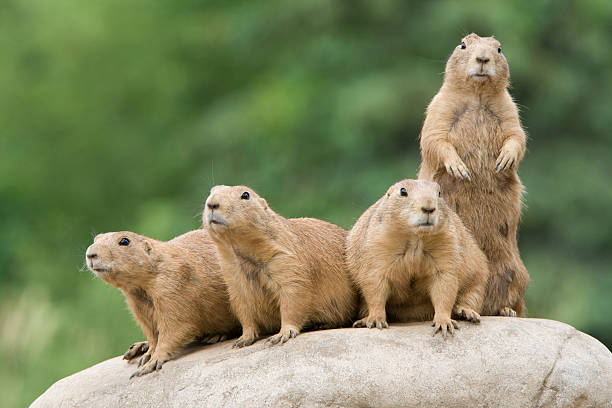**Understanding the Social Lives of Prairie Dogs**
Introduction: Discover the complex social structures, communication methods, and behaviors of prairie dogs, a species that is often overlooked but plays a vital role in the ecosystem. Prairie dogs, despite their name, are not dogs but a type of North American ground-dwelling rodent. They have been a subject of interest for researchers due to their complex social structures and elaborate communication methods. By understanding their behavior and communication, we can gain insights into their crucial role in maintaining the ecosystem balance, and how human activities impact their survival.

The Social Structure of Prairie Dog Communities
Prairie dogs live in colonies, also known as towns, which can stretch over hundreds of acres and house thousands of individuals. Each town is divided into several family groups or coteries, usually consisting of one male, multiple females, and their offspring. These coteries are fiercely territorial and have distinct boundaries that they defend against other groups.
The Remarkable Communication of Prairie Dogs
Prairie dogs have one of the most sophisticated animal languages documented. They communicate through a series of high-pitched barks, with different sounds signifying different predators. They can distinguish between the size, shape, and speed of the predator, and even the level of threat it poses. Their communication is so complex that some researchers argue it should be considered a form of language.
The Role of Prairie Dogs in the Ecosystem
Prairie dogs play a crucial role in the ecosystem. Their burrowing activities aerate the soil and increase water infiltration, improving the quality of grasslands. They are also a keystone species, providing food and shelter for a variety of other animals. Their decline due to habitat loss and plague has had serious repercussions for the entire ecosystem.
The Current Status and Conservation Efforts
The population of prairie dogs has declined by more than 95% over the last century. This decline is due to factors such as habitat loss, plague, and poisoning. However, various conservation efforts are underway, including plague vaccination programs and habitat restoration projects. By understanding and appreciating the importance of these animals, we can contribute to their survival and the overall health of our ecosystem.
In conclusion, prairie dogs are remarkable creatures with complex social structures and sophisticated communication methods. They play a vital role in the ecosystem, and their survival is crucial for maintaining the balance of nature. It’s imperative that we continue to study and protect these fascinating creatures to ensure their future survival.






